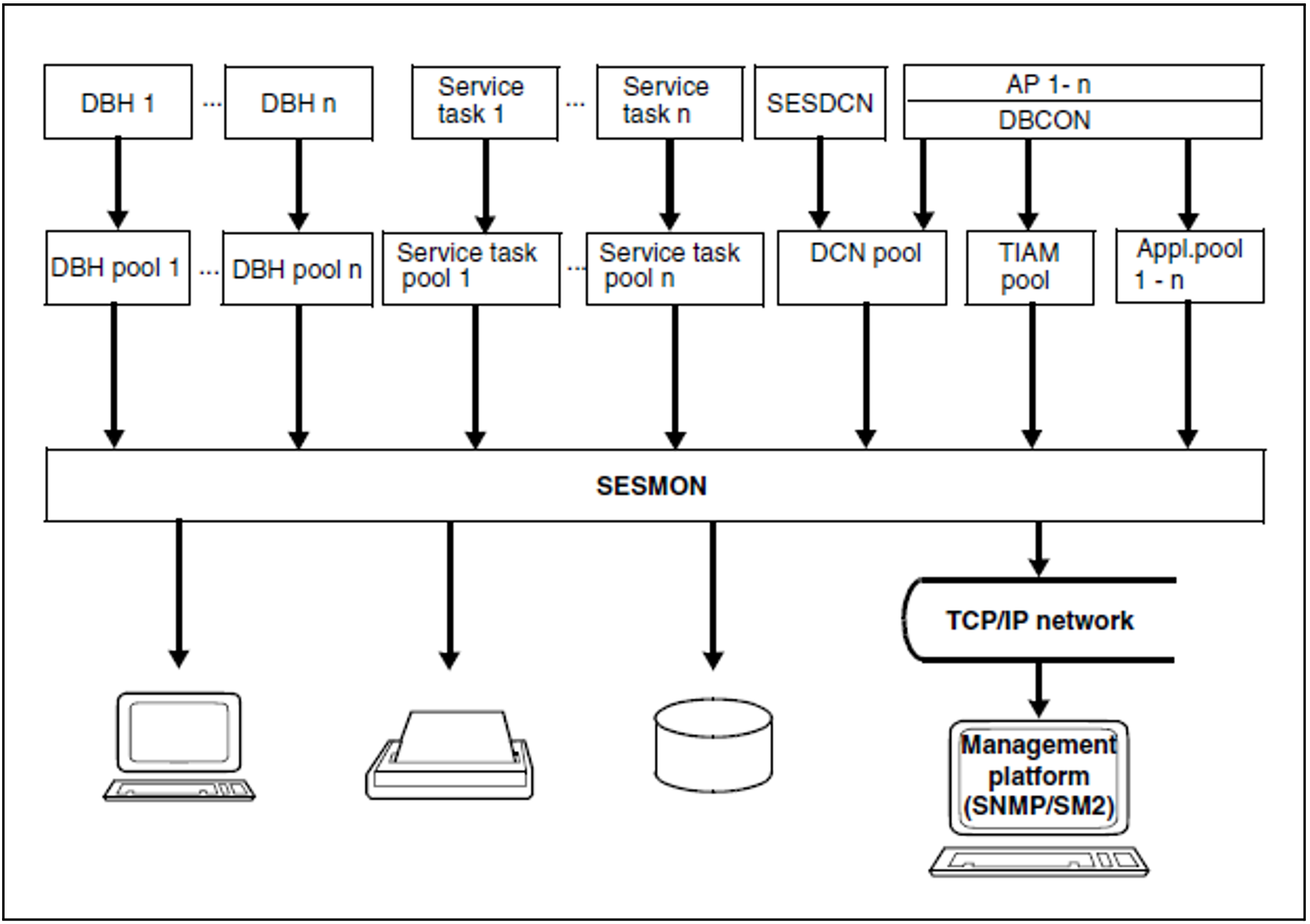The SESMON performance monitor collects system data on current database operation and edits it on the basis of various statistical criteria.
The system administrator can see from the data obtained what effect the DBH and DCN options have on the time behavior of the database system, the extent to which its resources are utilized, and where bottlenecks could develop. From this, he/she can work out how to set the database system to meet the requirements of the specific application.
The “ Performance” manual provides assistance in analyzing performance problems and indicates any measures that may have to be taken.
Access from the World Wide Web
You can also access the administration program SESADM, the performance monitor SESMON and the utility monitor SESUTI all from a unified access on the World Wide Web (WWW or Web for short) with the aid of the software product WebTransactions (WebTA).
To access the SESAM programs via the Web, you only need a standard browser in addition to the software product WebTransactions.
Web access is described in the document “ WebTA access for SESAM/SQL” shipped together with SESAM/SQL-Server. This document is also available from our manual server under the software product SESAM/SQL.
Output via SNMP to a management platform
You can use the SESAM/SQL agent to transfer the data from the performance monitor SESMON via SNMP to a management platform, see "Output of statistical data via SNMP".
Output via openSM2
You can also transfer the data from the performance monitor SESMON to the software monitor openSM2 in the BS2000 system, see "Outputting statistical data via openSM2".
Counter and counter overflow
In the case of large databases and long-running database operation, the probability that counters of the performance monitor will become unwieldy or even overflow increases. For information on this see the control options in SESMON ( "Overview of the statistical output of SESMON") and the information on counter overflows ( "DBH form I/O").
How SESMON works
The components shown in the figure below store data in the various pools. SESMON reads data from the pools, edits it, and outputs it to forms, printed lists or files. SESMON draws a distinction between SESDCN statistical output and DBH statistical output.
After SESMON is started interactively, you are requested to specify in a selection form which statistical information you require. SESMON then displays the selected forms cyclically: the CONFIGURATION forms first, if requested, and then the selected SESDCN forms, followed by the selected DBH forms for each DBH.
SESMON runs as a separate task and does not affect runtime behavior.
Figure 7: Collecting and evaluating data with SESMON
After an internal restart of SESAM/SQL-DBH or SESDCN, interval counters are not supplied for the first output.

